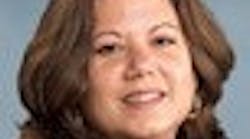Have a degree in science, technology, engineering or math and not sure what do with your life? Why not hop on stage and front a band or dazzle millions on the silver screen. Need a few mentors to emulate? The Guardian posted a slideshow of 15 people you can look to for career advice. Here are a few:
Dolph Lundgren – an action hero who got his start sparring with Sylvester Stallone in Rocky IV -- received a degree in chemistry from Washington State University in 1976, a degree in chemical engineering from the Royal Institute of Technology in Stockholm in the early 1980s, then a master's degree in chemical engineering from the University of Sydney in 1982.
TV's Lois Lane (aka Teri Hatcher aka a Desperate Housewife) is the daughter of a computer programmer who worked for Lockheed Martin, and a nuclear physicist and electrical engineer. Ms. Hatcher started off following her parents lead by studying mathematics and engineering as an undergraduate.
Dexter Holland, singer and guitarist for The Offspring, a punk band from California, made sure he had a backup plan when music stopped thrilling him.
Holland attended the University of Southern California, where he earned a B.S. in biology and a M.S. in molecular biology and commenced a Ph.D. in molecular biology. After the success of The Offspring, he suspended his candidature to focus on music. Holland has said that, at 40 years of age, he would rather be a professor at a university than playing music.
According to Wikipedia, as of 2013, Holland is a doctoral student at the Laboratory of Viral Oncology and Proteomics Research, Keck School of Medicine. In March 2013, Holland and co-authors published a paper in PLoS One regarding microRNA in HIV genomes, titled "Identification of Human MicroRNA-Like Sequences Embedded within the Protein-Encoding Genes of the Human Immunodeficiency Virus". The original academic paper describes the use of computational molecular biological (in silico) approaches to identify microRNA-like sequences in HIV. These sequences are suggested to have evolved to self-regulate survival of the virus in the host by evading its immune responses and thus influence the persistence, replication, and pathogenicity of HIV.
How's that for full circle?
You can check out the other dozen stars with STEM in their blood by going to The Guardian article.

Traci PurdumSenior Digital Editor and wannabe punk rocker who goes on to cure disease. You can e-mail me at [email protected].